|
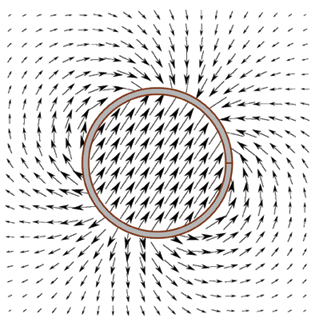 Maple 15 allows you to study and tackle a large range of problems in computational physics, including problems in classical mechanics, quantum physics,
and relativistic field theory. It also provides material of use in a first course in field theories at the graduate level Maple 15 allows you to study and tackle a large range of problems in computational physics, including problems in classical mechanics, quantum physics,
and relativistic field theory. It also provides material of use in a first course in field theories at the graduate level

- The Physics package extends the standard computational domain with operations over anticommutative and noncommutative variables and functions and related product and power operations, appropriate for quantum physics formulations; tensor indices of spacetime, spinor and/or gauge types, functional differentiation, differentiation with respect to anticommutative variables, differentiation and simplification of tensorial expressions using the Einstein summation convention for repeated indices. In this way, you can take advantage of the computational power of the Maple environment without having to change the flexible notation used when computing with paper and pencil.
- The extension of the computational domain includes the Vectors subpackage, to perform standard abstract vector calculus. The package includes representations for non-projected 3-D vectors, inert and active representations for the non-projected differential operators nabla, gradient, divergent, curl and the Laplacian, as well as algebraic (non-matricial) representations for projected 3-D vectors in the Cartesian, cylindrical, and spherical vector basis. It is then possible to compute using coordinate-free vectorial formulations, exploring the coordinate-free properties of the vectors and vectorial operations involved, without specifying the vector basis until that is desired, and to input /work with vectorial expressions involving both non-projected and projected vectors using essentially the same notation found in textbooks that you use when computing by hand.
- All the conventions for a given computation can be easily set using a compact and versatile interactive assistant. In order to perform this extension of the computational domain, a set of conventions for distinguishing between commutative, anticommutative and noncommutative variables, 3-D vectors, tensors, etc. are established. An advanced default setup of conventions is loaded when you load the Physics package. You can change these conventions using the Setup assistant.
- Textbook mathematical notation: Anticommutative and noncommutative variables are displayed in different colors, non-projected vectors and unit vectors are respectively displayed with an arrow and a hat on top, the vectorial differential operators Nabla and Laplacian with
 and and  are displayed as in textbooks, as are most of the other Physics commands/operations. are displayed as in textbooks, as are most of the other Physics commands/operations.
- Extensive documentation with examples for each Physics command, as well as examples illustrating the use of the package to tackle problems in analytical Geometry, mechanics, electrodynamics and quantum mechanics, are provided.
- A complete set of computational tools for advanced general relativity is provided within the Differential Geometry package. With Maple 15, seventeen new commands have been introduced in this area.
- Maple is the leading system in terms of computing closed-form solutions to ODEs and PDEs, relevant in many areas of physics. Maple 15 further enhances this area with a large number of new solving algorithms.
- Special functions, used to represent solutions in computational physics, are another strong area for Maple, which has seen further improvements in Maple 15. In particular, a new class of special functions, the Bell polynomials, have been introduced with this latest release.

Some examples of computations in Physics
Mechanics: Lagrangian for a pendulum

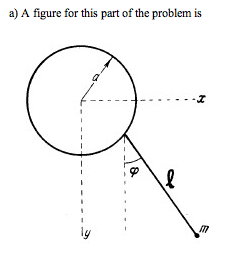
The Lagrangian is defined as


b) The steps are the same as in part a:
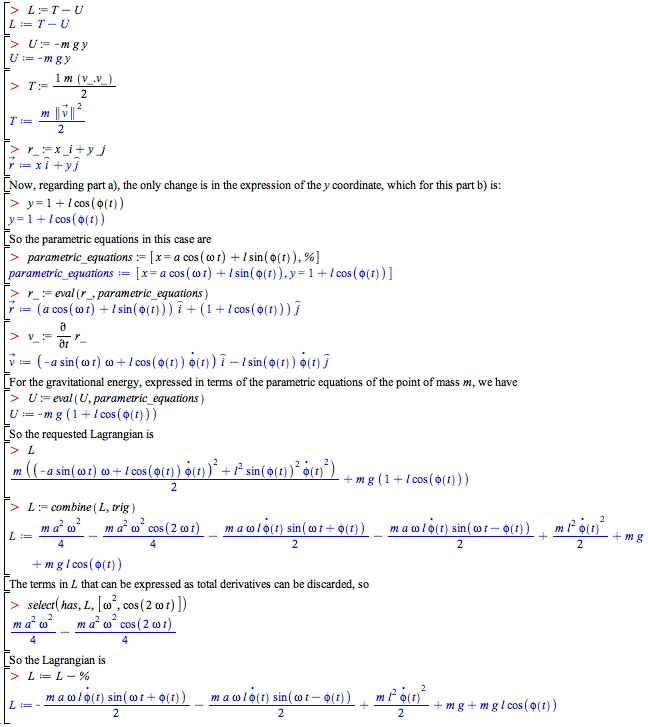

Electrodynamics: Magnetic field  of a rotating charged disk of a rotating charged disk
Problem

Solution


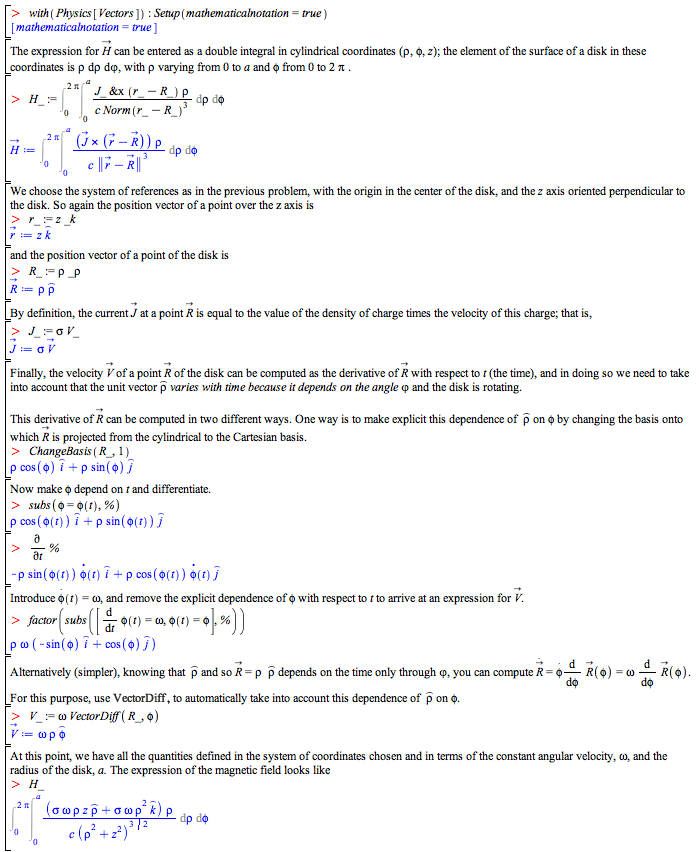
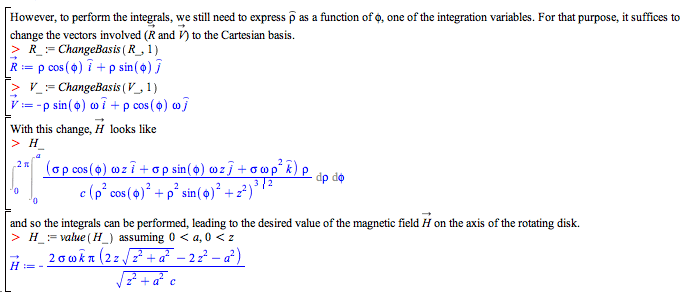


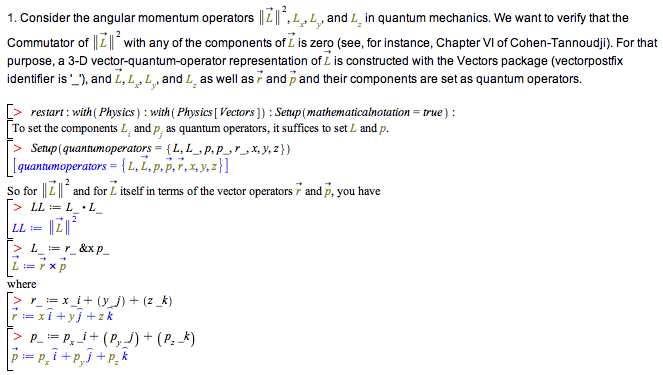
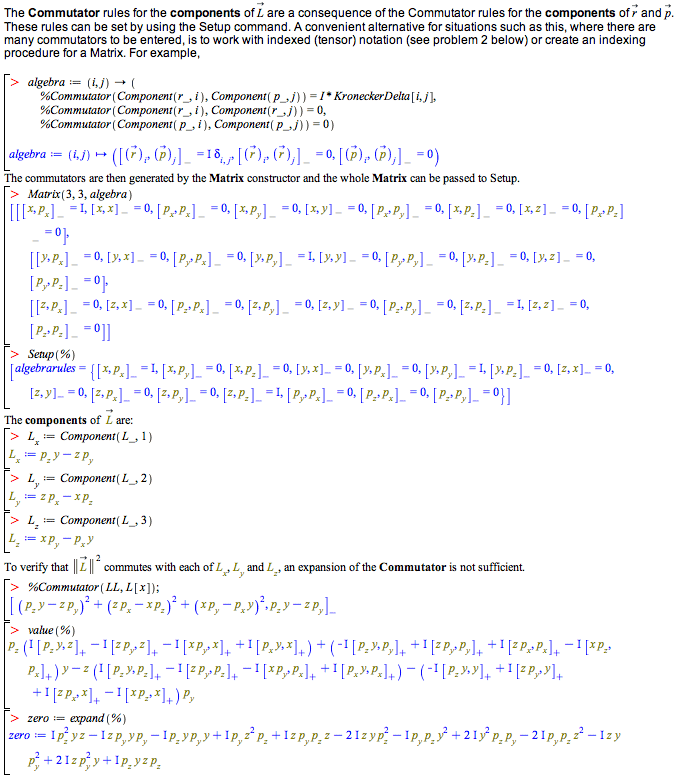
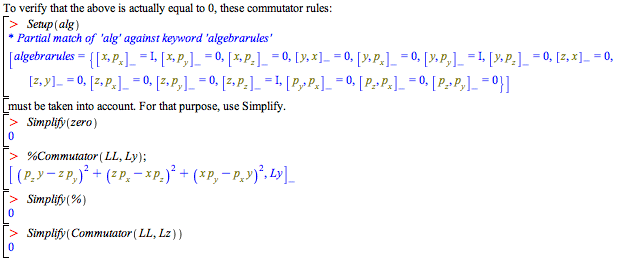

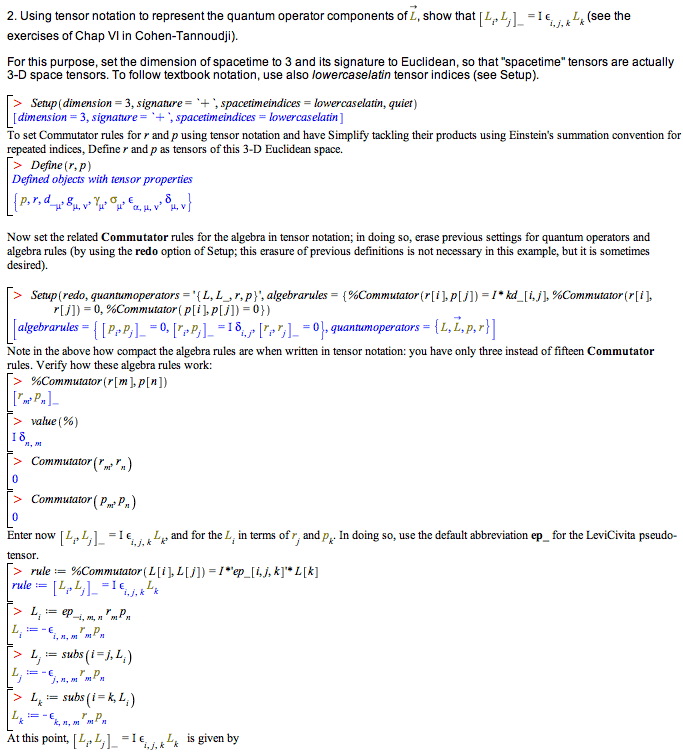

If you have Maple 15, you can try the examples on this page yourself:
|
